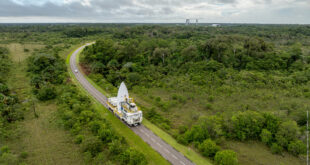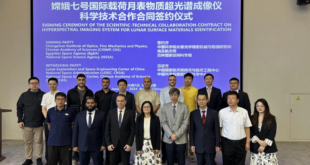
Ibadan, 31 May 2024. – China is preparing to land its Chang’e vehicle on the dark side of the moon after it launched the vehicle from the Wenchang Satellite Launch Center three weeks ago. According to the European Space Agency (ESA), the landing is now set for 00:00 UTC on the second of June. The spacecraft aims to collect about two kilograms of lunar samples from the unexplored lunar south pole, which it will subsequently try to return to Earth.
Ge Ping, Deputy Director of the Lunar Exploration and Space Engineering Center, China National Space Administration explained that to retrieve samples from the far side of the moon, the Queqiao 2 relay satellite must enable communication between the probe on the moon’s far side and the Earth. This is because direct communication with the space vehicle is impossible due to the far side of the moon being permanently away from Earth’s view.
Chang’e’s lander, ascender and orbiter modules have remained in the moon’s orbit since 8 May, with Chinese engineers waiting for the right orbital conditions to attempt the landing. After successfully landing, the lander module will use its robotic scoop and drill to collect surface samples of lunar rocks and dust. It will also dig around 2 meters into the lunar surface to get and extract deeper lunar deposits.
After collecting the lunar samples, the lander will transfer them to the ascender module, which will rendezvous with the orbiting module. The samples will then transfer to a return capsule that will return the collected samples to Earth. Upon completing the sample-return mission, China will subsequently conduct systematic, long-term laboratory research on the sample, including analysis of the structure, physical properties, and composition of the lunar soil.
 SpaceWatch.Global An independent perspective on space
SpaceWatch.Global An independent perspective on space




